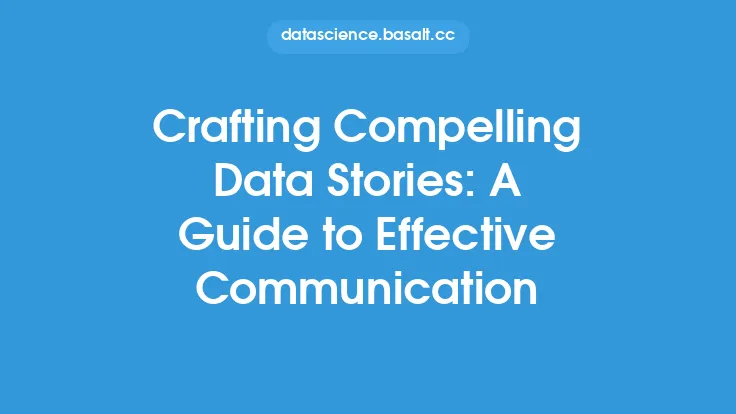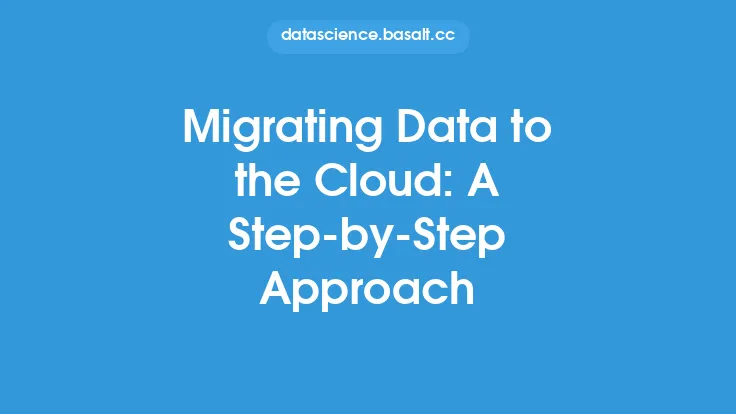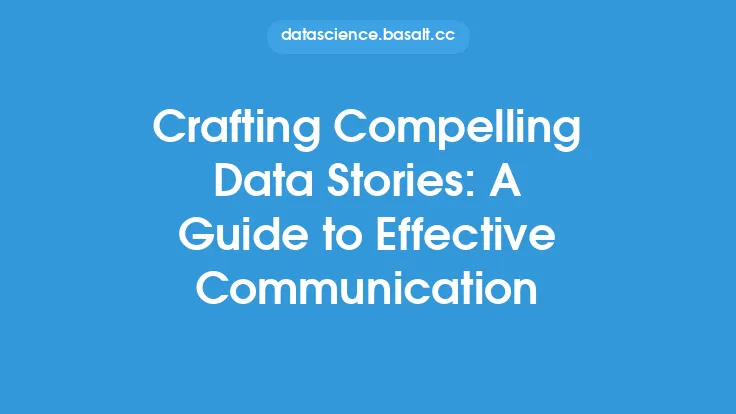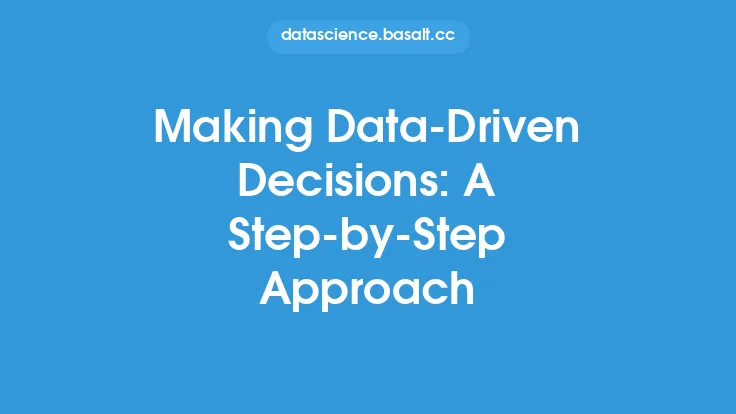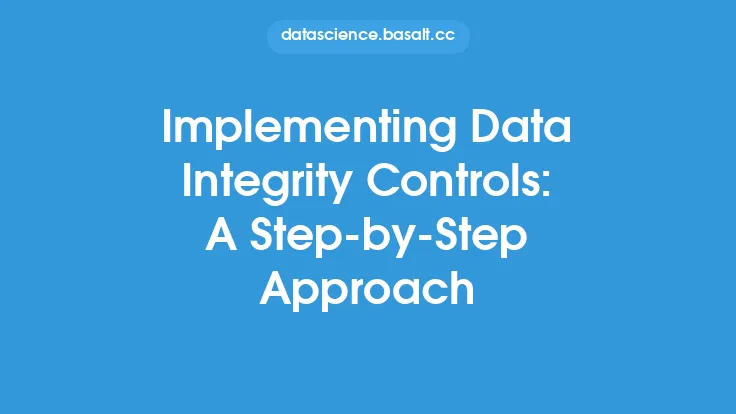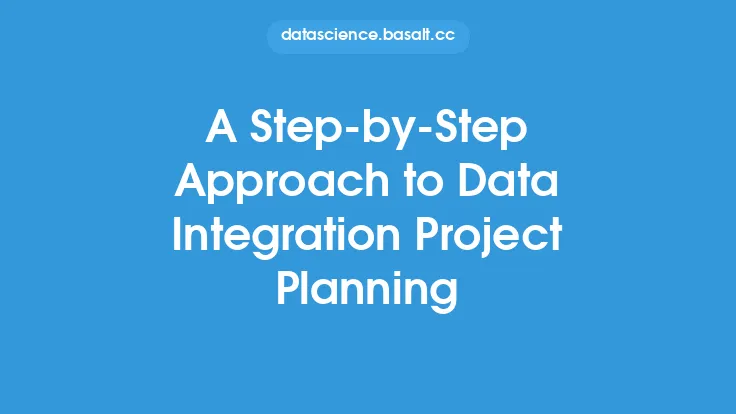When it comes to presenting data, it's easy to get caught up in the numbers and lose sight of the story behind them. However, it's precisely this story that has the power to captivate audiences, convey insights, and drive decision-making. Crafting compelling stories with data requires a thoughtful and structured approach, one that balances technical expertise with narrative flair. In this article, we'll delve into the step-by-step process of creating engaging data stories, exploring the key elements, techniques, and best practices that underpin this critical skill.
Understanding the Fundamentals of Data Storytelling
At its core, data storytelling is about using data to tell a story that resonates with audiences. It involves identifying key insights, structuring a narrative around them, and presenting the information in a way that's both informative and engaging. Effective data storytelling relies on a deep understanding of the data itself, as well as the audience and the context in which the story is being told. This means being able to extract relevant insights from complex datasets, communicate technical concepts in simple terms, and tailor the narrative to the needs and interests of the audience.
Preparing the Data
Before you can start crafting your story, you need to prepare your data. This involves several key steps, including data cleaning, transformation, and analysis. Data cleaning is the process of identifying and correcting errors, inconsistencies, and inaccuracies in the data. This might involve handling missing values, removing duplicates, and performing data normalization. Once the data is clean, you can begin to transform it into a format that's suitable for analysis. This might involve aggregating data, creating new variables, or performing data merging and joining operations. Finally, you can begin to analyze the data, using statistical techniques and data visualization tools to identify key trends, patterns, and insights.
Developing the Narrative
With your data prepared, you can start to develop the narrative of your story. This involves identifying the key insights and themes that emerge from the data, and structuring them into a coherent and compelling narrative. A good data story should have a clear beginning, middle, and end, with a well-defined protagonist, conflict, and resolution. The protagonist might be a customer, a business, or a social issue, while the conflict might be a challenge, a problem, or an opportunity. The resolution, meanwhile, should provide a clear call to action, recommendation, or insight that emerges from the data. When developing the narrative, it's essential to keep your audience in mind, using language and concepts that are accessible and engaging.
Creating Effective Visualizations
Data visualizations are a critical component of any data story, providing a powerful way to communicate complex information in a simple and intuitive way. When creating visualizations, it's essential to choose the right type of chart or graph for the data, using techniques such as bar charts, line charts, scatter plots, and heat maps to convey different types of information. The visualization should be clear, concise, and well-designed, with a clear title, labels, and legend. Color should be used judiciously, with a focus on contrast, harmony, and visual appeal. Interactivity can also be a powerful tool, allowing users to explore the data in more detail, filter and drill down into specific subsets, and gain a deeper understanding of the insights and trends.
Refining the Story
Once you have developed the narrative and created the visualizations, you can begin to refine the story. This involves reviewing the content, structure, and flow of the narrative, ensuring that it's engaging, informative, and easy to follow. You should also test the story with different audiences, gathering feedback and iterating on the content and presentation. Refining the story might involve simplifying complex concepts, adding more detail and context, or emphasizing key insights and takeaways. It's also essential to ensure that the story is well-supported by the data, with clear and transparent methodology, and a focus on accuracy and validity.
Presenting the Story
Finally, you're ready to present the story to your audience. This might involve creating a written report, designing an interactive dashboard, or delivering a presentation. When presenting the story, it's essential to be clear, concise, and engaging, using storytelling techniques such as anecdotes, examples, and metaphors to bring the data to life. You should also be prepared to answer questions, provide additional context, and offer insights and recommendations that emerge from the data. The presentation should be well-structured, with a clear introduction, body, and conclusion, and a focus on visual appeal, clarity, and impact.
Best Practices and Common Mistakes
When crafting compelling stories with data, there are several best practices and common mistakes to be aware of. Best practices include keeping the story simple and focused, using clear and concise language, and avoiding technical jargon and complexity. You should also use high-quality visualizations, provide context and background information, and emphasize key insights and takeaways. Common mistakes, meanwhile, include using too much data, failing to provide context, and neglecting to tailor the story to the audience. You should also avoid using misleading or deceptive visualizations, and ensure that the story is well-supported by the data, with clear and transparent methodology.
Conclusion and Future Directions
Crafting compelling stories with data is a critical skill for anyone working with data, from business analysts and data scientists to marketers and policymakers. By following the step-by-step approach outlined in this article, you can create engaging and informative data stories that resonate with audiences, convey insights, and drive decision-making. As the field of data storytelling continues to evolve, we can expect to see new tools, techniques, and technologies emerge, from interactive and immersive visualizations to artificial intelligence and machine learning. By staying up-to-date with the latest developments, and continually refining and improving your skills, you can become a master data storyteller, able to communicate complex information in a simple and compelling way.
